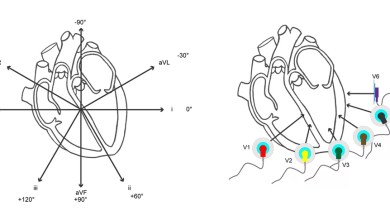Negative pressure breathing is how we breathe normally, without the aid of bag-valve-masks or mechanical ventilators.
Inspiration – Normally

Breathing in is produced by ‘contraction and downward motion of the diaphragm [which] causes a negative pressure in the chest’ —–> inspiration. (Goldberg, 2014: 51, emphasis added)
Inspiration is therefore a muscular process (the diaphragm is a muscle) which is normally mainly reliant on the diaphragm. However, accessory muscles including the ‘pectoralis major and minor’ may also be used and are ‘vital to survive in certain pulmonary conditions’ (Goldberg, 2014: 51).
Let’s explain this by breaking it down:
Why does a contracting diaphragm cause negative chest pressure?
Because the volume has increased. This process is represented in Boyle’s Law (Rice University, 2016). Put simply, more space = more volume. When there’s more space in the chest, as with the contracting diaphragm, there is more room for air particles to move. They’re not crammed in any more, so there’s not much pressure.
On the other hand, when those air particles are tightly squeezed in a smaller space, there is less pressure.
To summarise:
- more space = more volume
- less space = less volume
- more volume = less pressure
- less volume = more pressure
- Tightly squeezed particles in little volume cause a lot of pressure
- Free moving particles in a lot of volume cause less pressure
Why does negative pressure cause inspiration?
This has to do with the laws of thermodynamics. ‘For anything to happen, energy has to move or flow or change’ and ‘energy has an absolute unfailing tendency to go from “more concentrated” to “less concentrated”‘ (Watson, 2014).
So, it’s not so much because there is a negative pressure that we inhale. It’s because there is a change in pressure. When the diaphragm contracts, the pressure changes from high to low. Now there is no equilibrium. One of the laws of the universe (which is called a law because it’s been observed over and over again in different ways) occurs as a result: energy attempts to shift toward equilibrium. And the way it does that is by moving from an area of high pressure (outside the body) to one of low pressure (inside us).
Watson, 2014 has written a great explanation of this here: http://www.ftexploring.com/energy/2nd_Law.html>
Also, this is a great video which demonstrates the process: https://www.youtube.com/watch?v=q6-oyxnkZC0
Expiration – Normally

This is ‘largely passive’, frequently happening ‘without any muscle action’ when relaxed. The contracted diaphragm simply ‘springs back into shape’ (Goldberg, 2014: 51). However, using the ‘external and internal intercostal muscles’ amongst others, you can ‘voluntarily exhale forcefully’ (Goldberg, 2014: 51).
Either way, this process creates more pressure because there is now less volume (less space) for air particles to move around. Following the laws described above, air moves from an area of high pressure (the lungs) to an area of low pressure (outside) (Collison et al, 2002: 57; Watson, 2014).
It’s intuitive that this change in pressure and lack of equilibrium (Watson, 2014) will ensure that the process repeats itself. Each time the diaphragm contracts, the volume changes so the pressure changes. Air flows inside. Then there’s too much pressure and less volume as the diaphragm is returning to shape (Goldberg, 2014). So air flows out. Then the diaphragm contracts again…
References
Baker, D. n.d. Emergency and Transport Ventilation: an introductory guide, Smiths Medical International Limited: Bedfordshire
Collison, P. et al, 2002. Nelson Modular Science: 2, Nelson Thornes Ltd: Cheltenham.
Goldberg, S. 2014. Clinical Physiology made ridiculously simple, MedMaster: Miami.
Rice University, 2016. The Process of Breathing, Available Online: https://opentextbc.ca/anatomyandphysiology/chapter/22-3-the-process-of-breathing/ (Accessed 01/11/2017)
Watson, D. 2010. The Second Law of Thermodynamics, Available Online: http://www.ftexploring.com/energy/2nd_Law.html (Accessed 01/11/2017)
This article has not been endorsed by any company.
With thanks to Smiths Medical for providing information.

Discover more from Article 999: Refresh, support, advance UK public health literacy & Paramedics (and similar roles).
Subscribe to get the latest posts sent to your email.








5 Comments